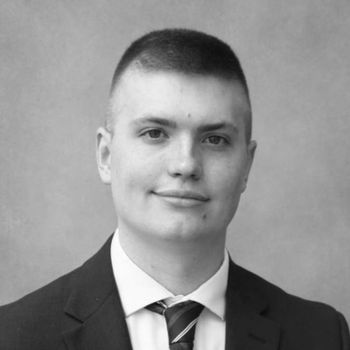Students demand ‘space for healing’ over drag show photo
Following criticism of a Seattle University (SU) student newspaper featuring a risqué drag show cover photo, students are demanding a “physical space for healing.”
The Spectator’s April 11 edition featured a cover photo of an SU student performing at a draw show, replete with a sparkly leotard, kicking a leg into the air while seated.
Less than 24 hours after the edition bearing the image was stocked on campus, surveillance footage showed an individual removing stacks of newspapers from various stands across campus.
The perpetrator was later identified as Father David Leigh, an English professor at SU.
[RELATED: Princeton prof blasts library over ‘Drag Queen Story Time’]
“I was offended by a recent edition of The Spectator, whose cover contained what I considered an inappropriate risqué photograph,” Leigh explained in an email statement to The Spectator. “I deeply regret this action and have no further comments.”
Several days prior to the incident, SU President Father Stephen Sundborg told The Spectator he was “very, very embarrassed and ashamed” of the photo.
“I thought it offended all dignity and respect of sexuality and of persons of bodies,” Sundborg stated, calling the photo “indecent” and labelling the decision to feature it “a mistake.”
[RELATED: Prof gives extra credit for attending drag show event]
In response to the removal of newspapers, as well as Leigh and Sundborg’s statements denouncing the drag show photo, a coalition of several SU student organizations, dubbed the “Gender Justice Alliance,” has released a petition with multiple demands, garnering 537 signatures as of press time.
“On behalf of the Gender Justice Alliance, we are writing to share our desire for a trans-inclusive campus that takes into account the whole person,” the petition reads, calling Leigh and Sundborg’s actions “unacceptable.”
“We desire gender inclusive housing policy, the formation of the Healing Trauma Collective, and a physical space for healing,” the petition continues.
Elaborating on the demands, the petition calls for a “Trans* inclusive training by transgender people,” for SU Housing and Residence Life (HRL) and the school’s Residence Hall Association (RHA), as well as a “web page with resources for trans* and non-binary students to easily navigate the housing system.”
Further, the coalition calls for the establishment of a “Healing Trauma Collective,” which it describes as a “community and institutional collaboration with the objective to implement training for all faculty and staff to establish a shared language to best support students impacted by trauma.”
Lastly, the petition calls for the creation of a “Trauma Center,” specifying that it should be a “student-led space with peer counselors to connect students impacted by trauma with tangible resources” that gives students “physical space to decompress and heal.”
[RELATED: University turns frat into ‘safe space for black students’]
Members of the Gender Justice Alliance include the Triangle Club, Student Support Network, the Gender Justice Center (GJC), and the Queer and Trans People of Color Club.
The GJC, one of the leading members of the coalition, describes itself on its website as a student-led group that provides students with “professional and social development through a gender-responsive lens,” adding that it also works to “eradicate belief systems that sustain bigotry, heterosexism, transphobia, homophobia, and any other type of abuse.”
In addition, an SU student organization calling itself “Outlaws” created a Facebook event in response to the drag show controversy to promote a forum titled “Responding to Homophobia and Transphobia, Building Strong Community: A Panel and Discussion.”
“Members of the Seattle U community are expressing dismay, offense, and tension in the wake of the controversy about the drag performance photo cover of The Spectator,” the event description states. “Particular reactions to the photo represented an affront to members of our LGBTQ community and their allies.”
“The primary goal is to create a space where our community can share how we are being impacted, how we are responding, and together consider these events in the context of Jesuit teaching, education, and social justice,” the description concludes.
Follow the author of this article on Twitter: @rMitchellGunter

